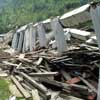Chile Earthquake Rebuilding, Shelter Design, Architect, Photos, Architecture, Images
Chile Earthquake Buildings : Architecture
Article 25 Shelter Building Design in South America + related issues
page updated 21 Aug 2016 ; 8 Jun 2010
Chile Earthquake Shelter Design
Monthly Report by Article 25 – written for www.e-architect.com
Safer Buildings for Communities Across the Globe
‘Article 25: the built environment’s charity’
Earthquakes…Aid…Recovery…& Architects? : Where do design skills fit into the recovery process?
8 Jun 2010
Article by Charlotte Trevor
As Article 25’s architect in Chile reports back from the field, it is evident that his role has evolved, and consequentially, also the expertise that are needed. It seems clear that the place of the built environment professional in post-disaster relief and reconstruction is subject to interpretation and adaptation, very much depending on the specifics of the event in question.
In the aftermath of the earthquakes in Chile and Haiti, an interesting question is inevitably raised about when, and how, it is appropriate for architects and other built environment professionals to get involved in aid and rebuilding efforts.
As we all witnessed, not least from the difference in the sheer amount of press coverage, there was tremendous variation in impact and therefore the human and financial costs, between the two quakes. These can in part be put down to geological/geographical specifics, which are beyond human control including the epicentre location of the disaster (Haiti’s hitting the capital and Chile’s being off-shore and 22 Kilometres deeper). These stark contrasts mean that the range of skills needed and the urgency of deliverance cannot be standardised.
Other man-made differences point to the dissimilarity of the two nations’ needs. An obvious variable is how prepared the country was for the impact of a natural disaster, which can drastically alter the practices and methods applied when it comes to international aid efforts. In Haiti for instance, there were un-enforced and comparatively lax building regulations, rendering most of the structures unable to safely survive any natural disaster;
“….poor construction was largely responsible for the extensive loss of life. Inferior design, deficient materials, unskilled labour and insufficient regulations all contributed to building failures” (Melissa Arcand, Haiti Project Coordinator, Article 25)
In Chile however, there are multiple systems in place to reduce the people’s vulnerability in the event of a disaster. For example, strict seismic building codes were put in place after the 1985 quake, and earthquake training is integrated into the education programme for Chilean adults and children.
These differences affect when architectural help is appropriate as Chile is further along in the reconstruction process, largely due to their preparedness and specifically what help is needed. The range of assistance required ranges hugely, from immediate assistance with provision of food, water and basic emergency shelter to the designing of new earthquake or hurricane resistant structures to lessen the impact of any future disasters.
The state of emergency protocol and coordination of relief efforts have a great impact on the efficiency and effectiveness of national recovery after a disaster, and is a useful marker for when architects could most beneficial and appropriate. Chile is a comparatively wealthy country, and so can afford to coordinate the bulk of its own relief efforts.
This, along with the country’s prior experience of earthquakes (meaning improved internal organisation) results in the outside assistance needed being relatively minimal. Haiti was already a poor nation pre-quake (GNP = $7.2 billion compared to Chile’s $222 billion). Aid, both monetary and in terms of resources, has come from literally millions of people all over the world for the Haitians. Lack of national funds leaves the Haitian government unable to finance its own aid/relief efforts, which means that they must rely heavily on external assistance.
Typical Haitian DIY/donated shelters ; Current government issued temporary shelters in Chile
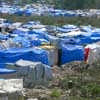
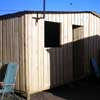
This can create logistical complications, which is what prompted the UN to set up the cluster system after the 2005 tsunami, with the scheme having its first active role in 2009 in Timor-Leste. This system has allowed NGOs to come a long way with the coordination of aid efforts, letting the nine key areas of relief be organised under individual banners and managed accordingly.
Community participation and local involvement is being increasingly recognised as an essential step in the rebuilding of any disaster ravaged nation. However, there are big questions to ask about when to approach a community to join up efforts, and the extent of the local community’s involvement in the reconstruction process.
One needs to consider how to manage community expectations, while being sensitive to the ordeal that they have just been through. During Article 25’s field work in Haiti for example, addressing long-term building needs may seem abstract to the community, as their immediate needs for things like water and food, coupled with enduring trauma, are more pressing.
In Chile however, the community had their basic needs met relatively quickly thanks to the country’s preparedness strategy, and many are living in robust transitional accommodation. This means that the Chileans can afford to be much more proactive and forward-thinking in their efforts. This is evident by the evolving role of our field workers working in Haiti and Chile post-disaster:
A community participatory workshop in Haiti
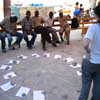
“The Article 25 facilitator found it difficult to dismiss short-term concerns, such a food and shelter, in favour of long-term school reconstruction objectives in the workshop.” [Article 25 field staff]
Weather-proofing of existing Chilean shelters
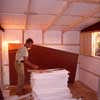
“….my role here has changed basically to establishing an assembly line of lino, plastic sheeting and polystyrene to insulate the temporary shelters being provided. I had expected to have some Technical / Structural assessment work but this is well in hand by the Government and its consultants. Indeed all the schools I have seen have fared very well and were clearly built to good earthquake design and construction standards.” [Article 25 field staff]
It could be that different built environment professionals are required at different times, or that some disciplines have more place in rebuilding efforts than others as recovery progresses, such as Engineers, planners, architects and surveyors. This is another subject up for debate, and could very well again depend on the specifics of the disaster in question.
There is obviously some need for built environment professionals after a natural disaster, but how much and when can depend on a number of variables, both natural and man-made. The support and participation of the real clients -those who have endured a disaster-, produces culturally appropriate designs, drawing on local experience and knowledge to ensure what gets built back is in fact better. The industry’s overwhelming willingness to lend skills (Article 25 was inundated with offers to help in the weeks immediately after the Haitian earthquake) must go hand in hand with the ability and readiness to be flexible and adapt to the specific and ever-changing needs of different geographical and cultural environments.
Chile Earthquake Rebuilding images / information from Article 25
Location: Chile, South America
Chile Architecture
Chile Architecture Design – chronological list
Chile Architect Studios
Chile Architecture – Selection
Contador-Weller House, Casablanca
Riesco + Rivera Arquitectos Asociados
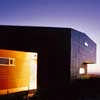
photograph : Carlos Eguiguren
Contador-Weller House
La Reserva House, La Reserva, Colina
Sebastián Irarrázaval
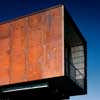
photo Carlos Eguiguren
Colina House
Monthly Reports by Article 25
Democratic Republic of Congo Schools
Music Studio Design Competition
Website: 2015 Illapel earthquake Chile
Yingxiu Memorial Museum, China

Chinese Earthquake Memorial designed by Sutherland Hussey Architects
Haiti Earthquake Architecture Design
Haiti Architecture Competition
Comments / photos for the Chile Earthquake Shelter Architecture page welcome

